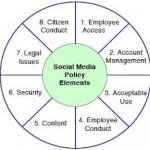 Our Community published this short but compelling piece of advice about annual reports from Disruptive Media in its latest Our Community Matters ezine:
Our Community published this short but compelling piece of advice about annual reports from Disruptive Media in its latest Our Community Matters ezine:
- Make your annual report an all-rounder
Your annual report can be a multi-purpose publication that works as a marketing tool across the entire year, so you get maximum mileage from the time and money you’ve invested in it. This type of report can help you strengthen your brand, raise your profile, improve fundraising opportunities and connect with the people you want to reach. - Go digital
Many organisations publish their annual reports online. Not only does this save on printing and distribution costs, it also seriously extends the value of what you’re producing. Creating a digital report opens up opportunities to reuse content across social media, allowing you to extend your reach and share your story with a wider audience. - Find a theme
Giving your annual report a theme is a great way to make it more memorable. The theme will guide the style of writing, photo selection and overall design. Using a theme keeps your message consistent and binds the report together. It also makes for much more interesting reading. - Create a story
People love stories. There’s something incredibly powerful about a personal account that just can’t be matched by cold facts and figures. So look for ways to thread stories throughout your report. Quotes, interviews and short stories are great ways to show how you’ve made a difference. Remember, too, that stories don’t have to be confined to print – videos make compelling, highly shareable content. - Use quality photos
Just as a good yarn is irresistible, so too do photos have spectacular pulling power. Well-placed photos break up large chunks of text and can breathe life into an otherwise dull report. Photos also connect with people on an emotional level, which can help them to better relate to what your organisation is about. The visual story of your annual report is just as important as the words, so it’s worth investing in good-quality photos throughout the year. As a bonus, of course, you can get extra mileage out of great photos in your other communications too.


 Here is a
Here is a 